USA: Lakes and Waterfalls of the Foss River Valley
Categories: Ecology | Nature | Travel
By Pictolic https://pictolic.com/article/usa-lakes-and-waterfalls-of-the-foss-river-valley.htmlIn Washington State there is a place called Alpine Lakes Wilderness - the wilderness of Alpine lakes. It is quite possible that you have already seen pieces of this place. And maybe even in my magazine. Mason and Kula-kula Lakes. Source Lake and Snowy Lake. Goat Lake, Calm Lake, and Ice Lakes. Lakes like Robin and many lakes without names. Rachel, Laila and Rampart Lakes. Surprise and Glacial Lakes. Lake Pratt and Lake Kolchak. Enchanted Lakes and Ingalls Lake. Lake Anneta and Lake Talapus. Not enough? Of course, not enough. The wild nature of the Alpine lakes is more than 700 year-round lakes, only 315 of which have names. And thousands and thousands of different puddles.
And wildlife is not just words. In the USA, a wilderness area is the highest degree of environmental protection. Unlike national parks, the purpose of which is both to protect nature and to make it accessible to most citizens, the purpose of wilderness areas is only to preserve nature as close as possible to its natural state.

As in national parks, it is forbidden to build housing and extract natural resources in areas of wildlife. The most important difference is that cars and any roads are prohibited in the wilderness areas. This is a very, very, very important rule. In fact, it is difficult to imagine something more terrible and at the same time routine for wildlife than highways crossing forests. They cut the territories of large predators into inaccessible areas from each other. Thousands and thousands of deer die under the wheels in the USA every year. In national parks in California, red signs are placed near the road to indicate the place where drivers recently crushed a bear. Such signs are easy to see every few kilometers.
U.S. law requires that each wilderness area be continuous and prohibits the use of any mechanized motorized devices on the territory. On the ground, this law is implemented as strictly as the Orthodox execute koshrut. In the name of protecting nature, not only cars and roads are prohibited, but also bicycles, baby strollers, helicopter flights and, for example, even chainsaws. This creates certain difficulties, because even if foresters need to remove some huge fallen tree, then this tree can only be sawed with an ordinary, manual, saw.
At the same time, oddly enough, hunting is officially allowed in these very protected places (naturally observing all other laws about hunting). In fact, in the wild, everyone is for himself. Fortunately, the prohibition of roads and cars works very well, so I almost never see hunters in the wilderness areas. Most of them prefer to shoot animals where they can then drag the carcass to the jeep.
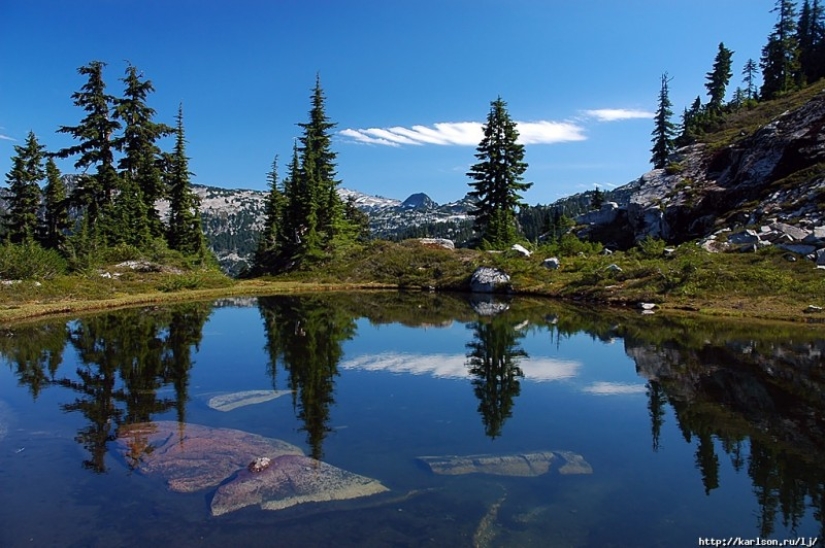
So, the Wild Nature of the Alpine Lakes is 1,600 square kilometers of pristine forest, lakes and mountains, no less or even more beautiful than anything in national parks and much less accessible. Most people living in Washington State have seen at best only a very small part of these places.
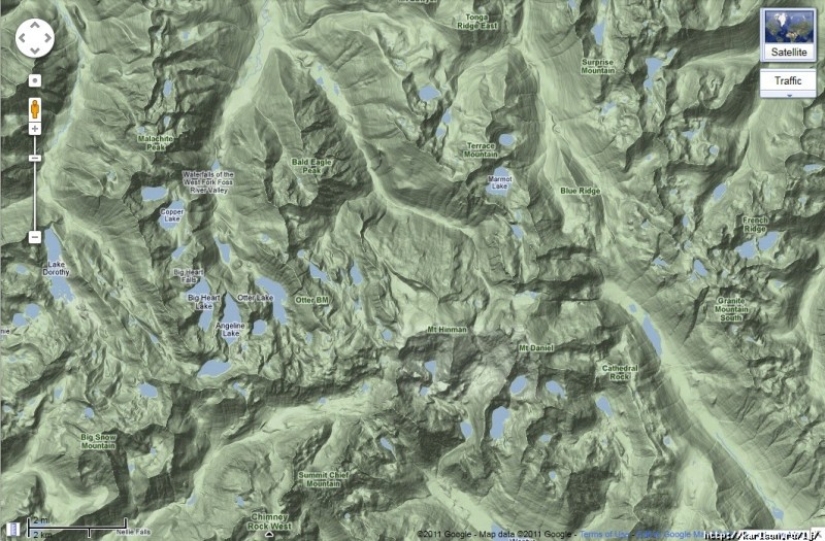
Personally, even just a map of these places thrills me.
This time I came up with the idea to follow the trail from the western fork of the Foss River through the mountains to its eastern end. This is a well-known expedition route here, recommended to strong people for five days of travel. Naturally, I decided to go all the way in one day.
We woke up at 4 in the morning, went out on the trail at 6:30, when the first rays of the sun had just touched the leaves. I love this forest! Wet and wet, thick and black. There are thousands of animals everywhere – Douglas squirrels, squeakers, frogs, mice, and, of course, chipmunks. Ripe blueberries, salmonberry, red huckleberry, black huckleberry, thimbleberry and wild currant (unfortunately, I do not know Russian names for many berries). Mushrooms, herbs and bushes. And yes, of course, huge trees.
Lakes – each one is cleaner and more beautiful than the previous one. The trail went up to Lake Malachite and turned to Lake Copper.
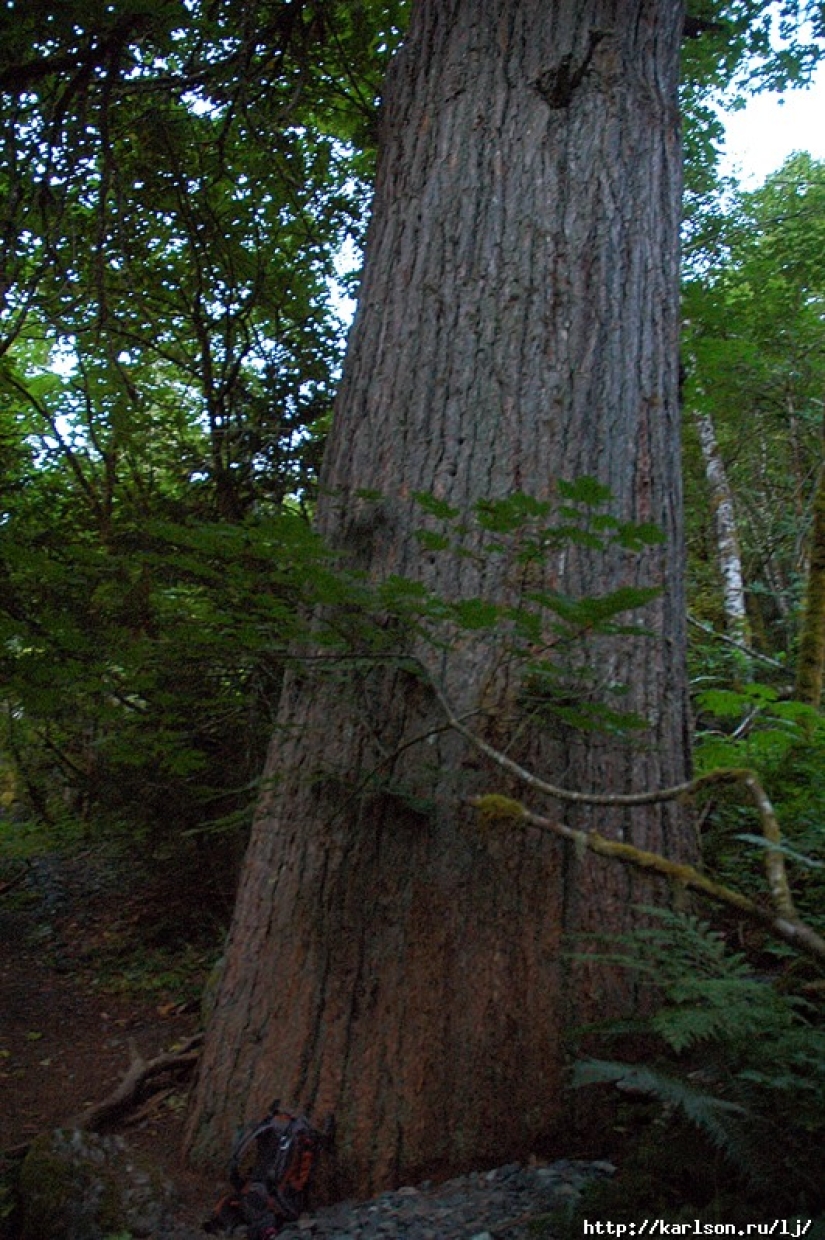
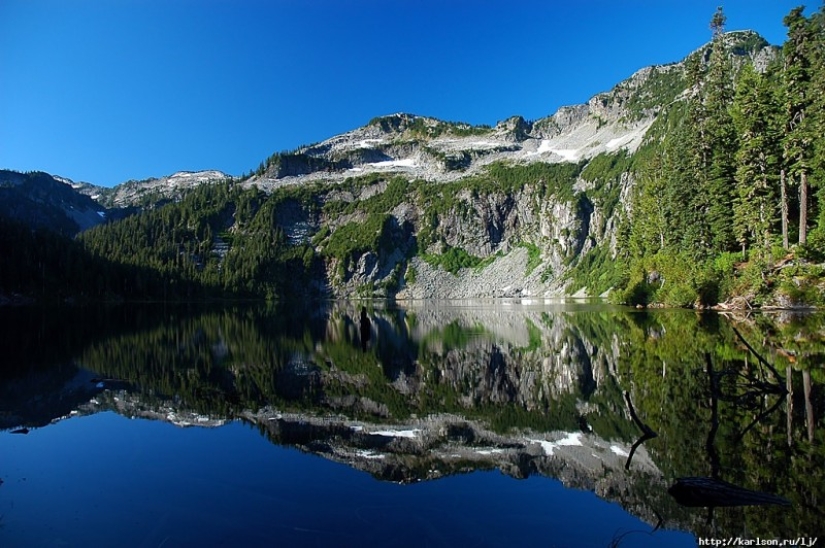
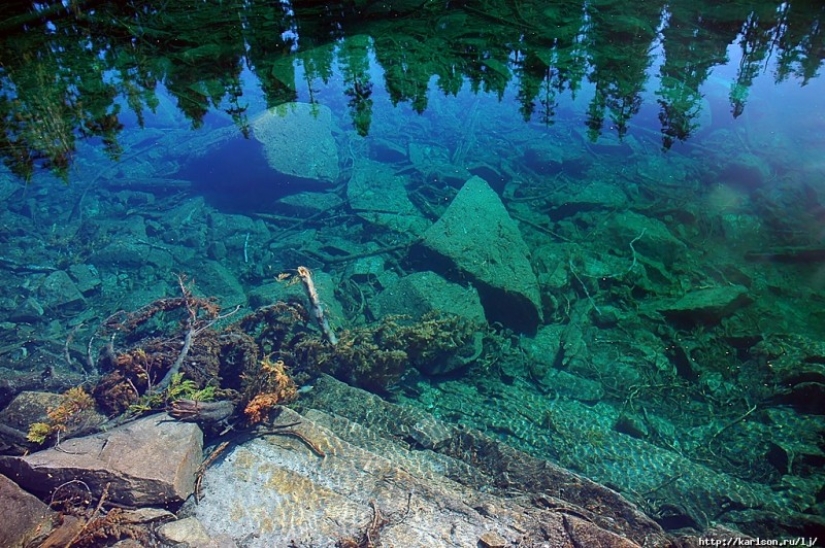
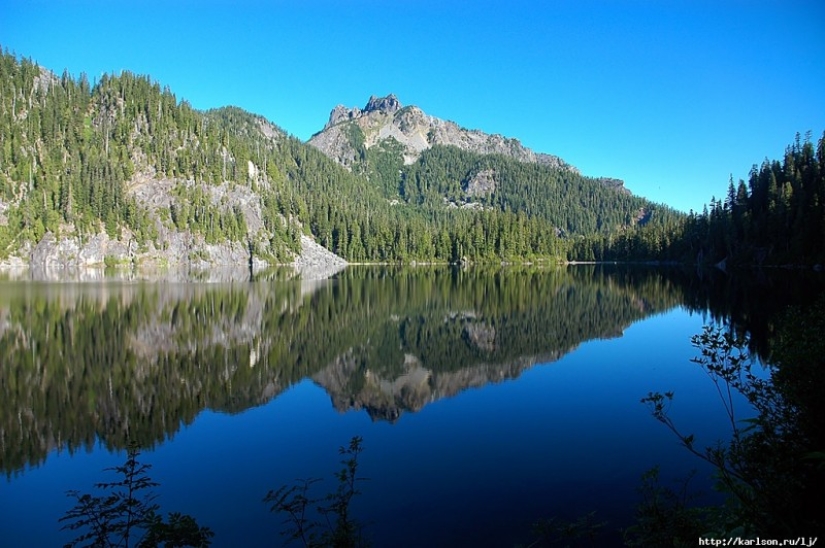
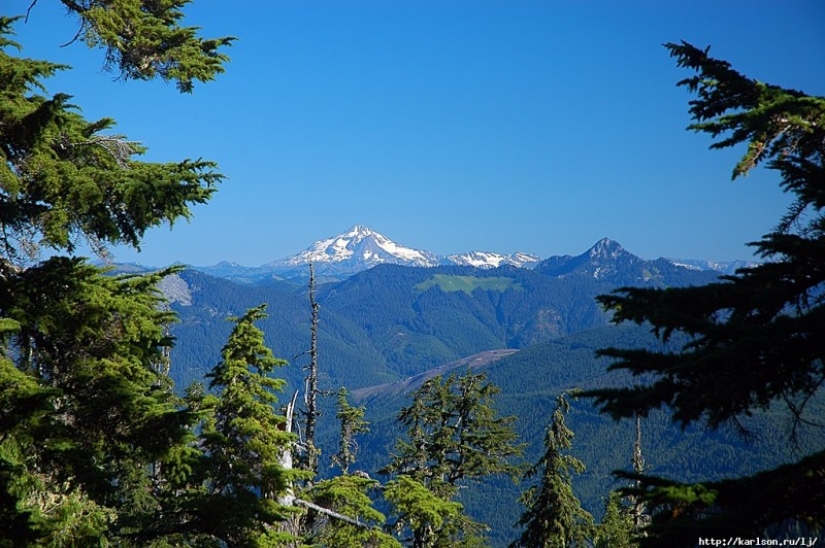
Little Heart Lake.
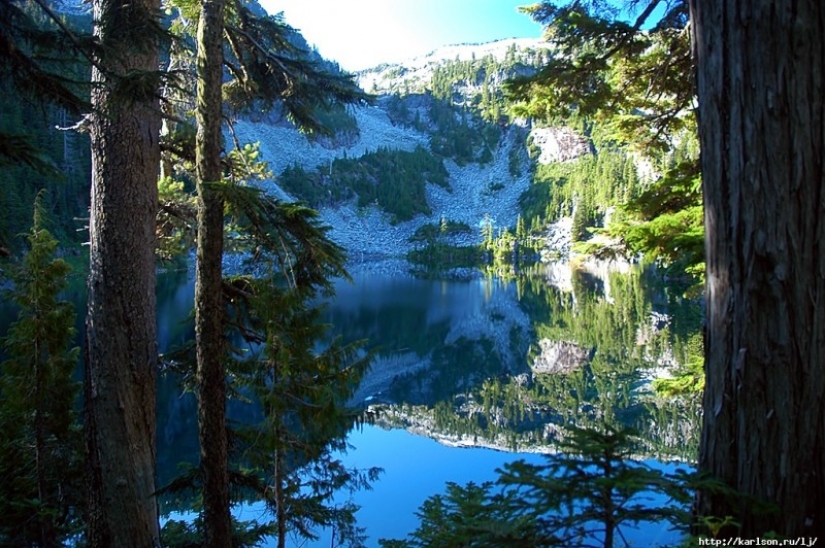
Delta Lake.
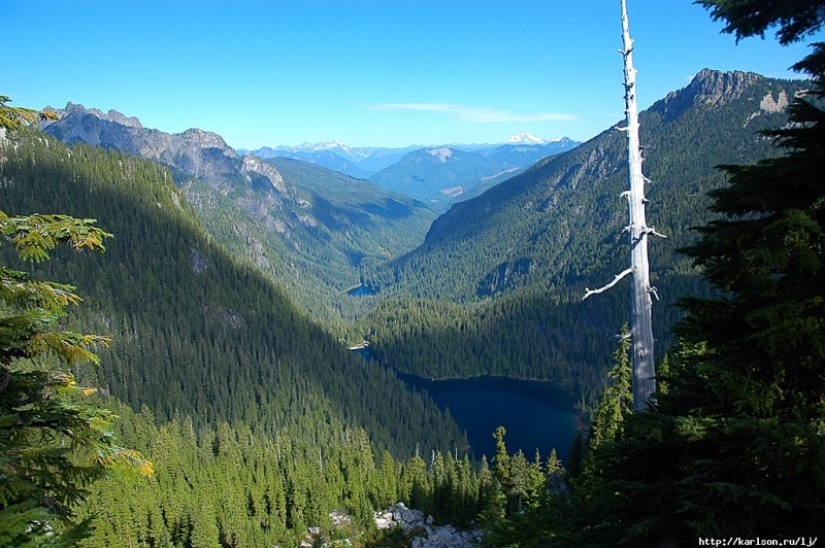
A Huge Lake Is A Big Heart.
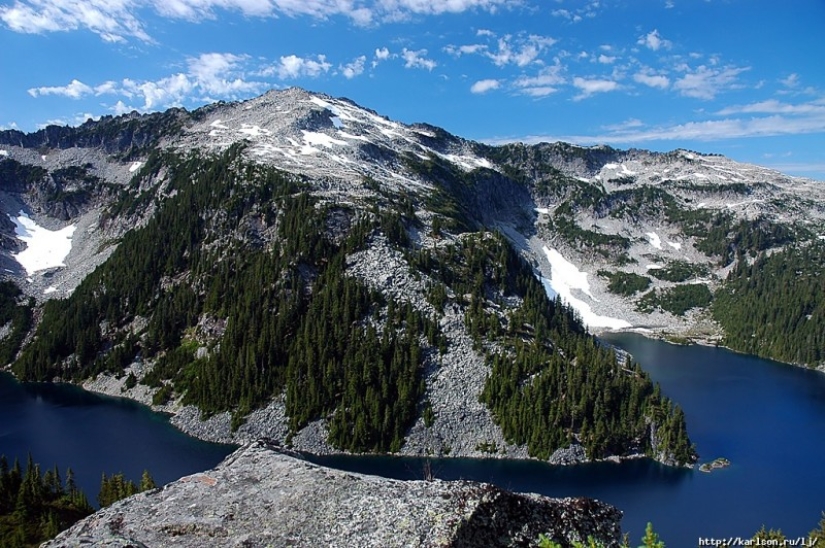
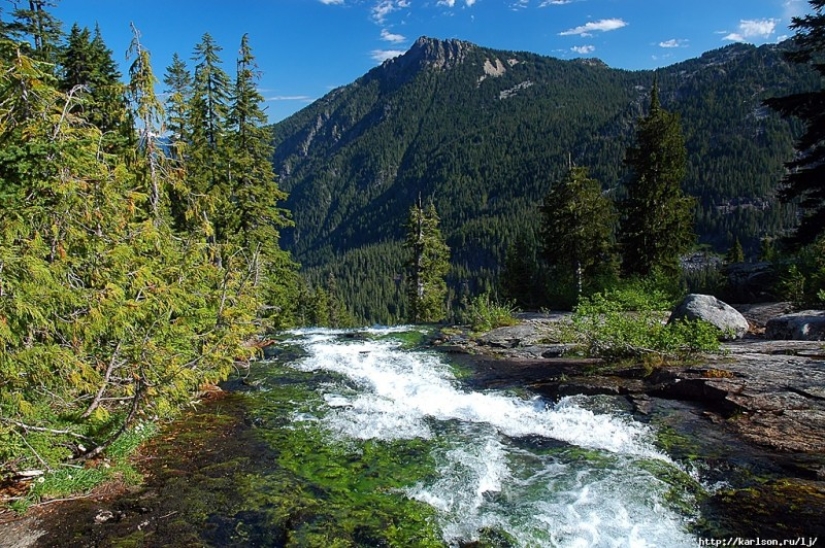
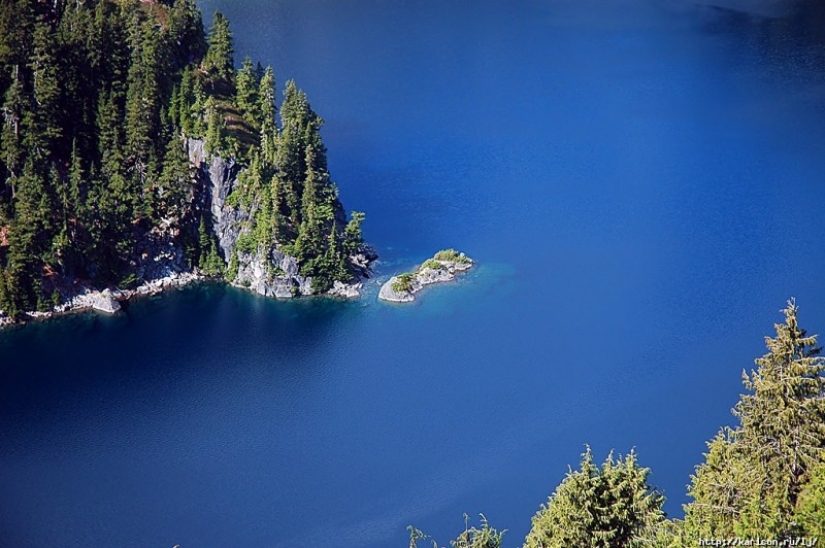
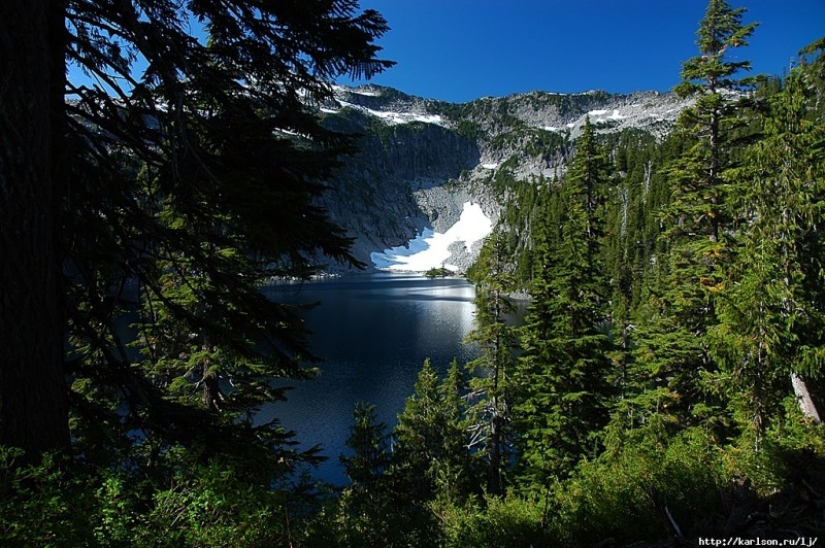
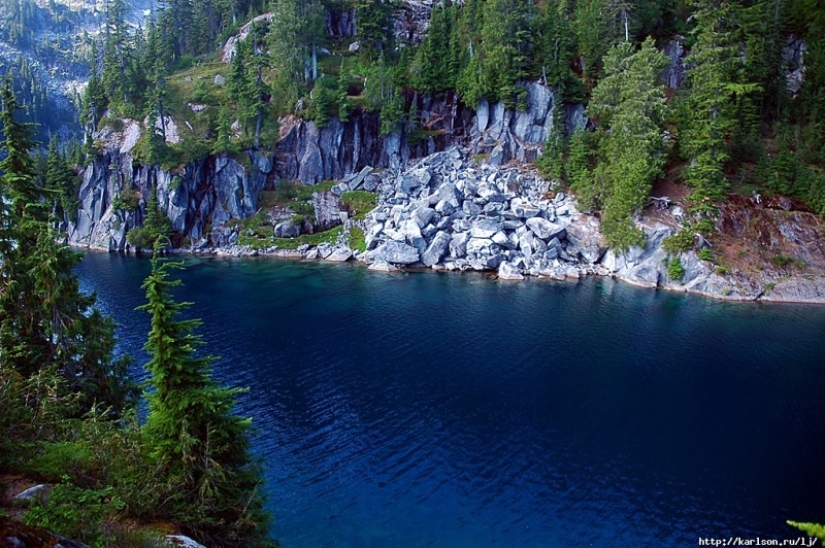
And behind it is an even larger Lake Angelina.

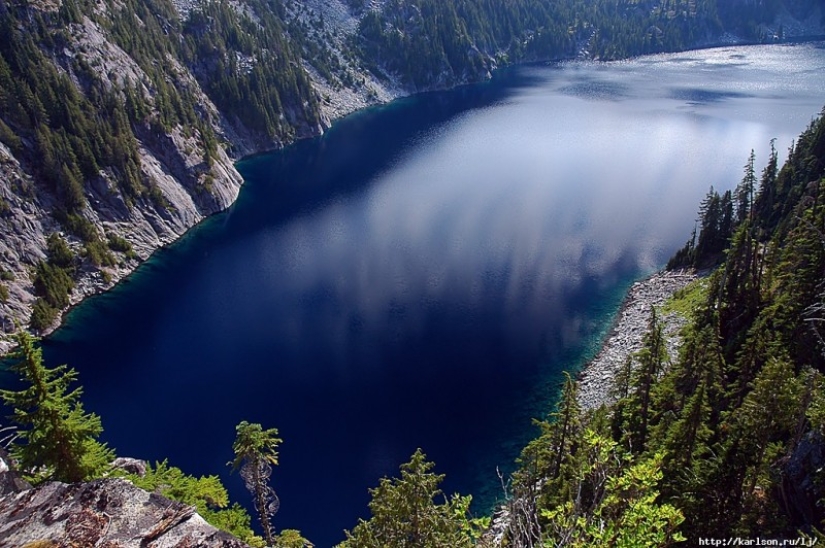
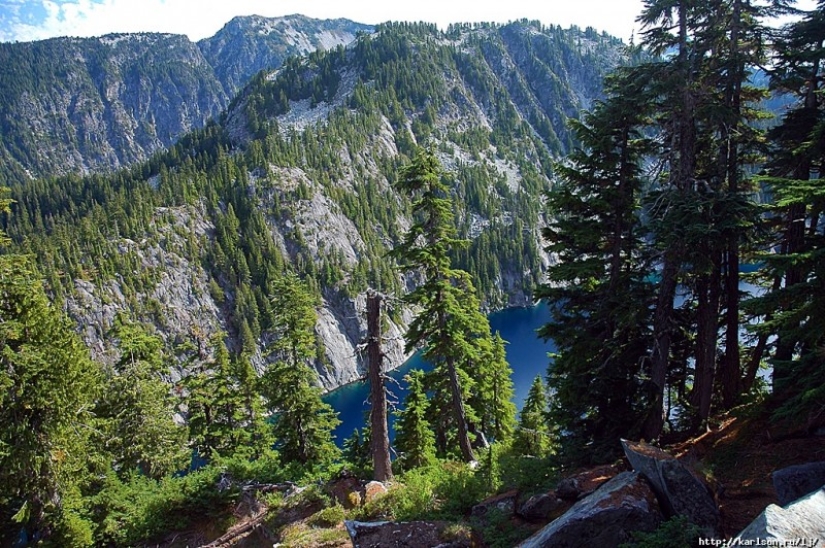
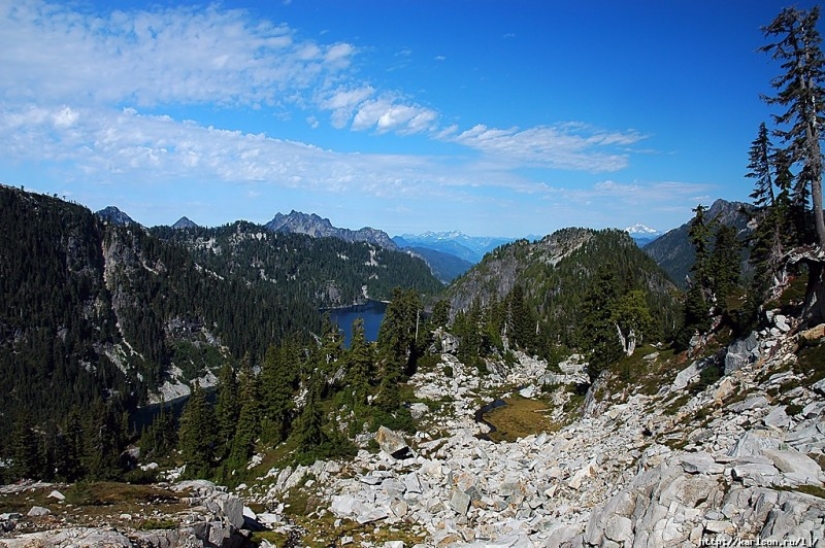
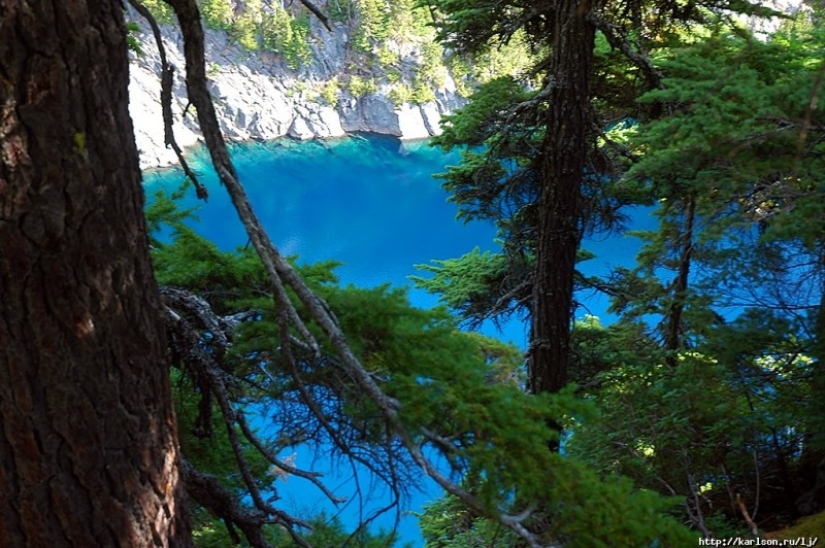
By the way, why are all lakes called by women's names? I've never seen Lake Bob. The trail ended there. Then the plan was to walk 24 kilometers without a trail through the mountains before meeting another trail in the Valley of the Necklace. I must say that 24 kilometers without a trail through the mountains is not the same as 24 kilometers on the trail. I had mapped out the route a day earlier by simply drawing lines on a topographic map. Along the ridge we climbed to the top between Lake Big Heart and Lake Angelina. We went down past Chetwood Lake to the source of Angelina Lake and again climbed up the avalanche descent to the ridge above Azurnoe Lake.

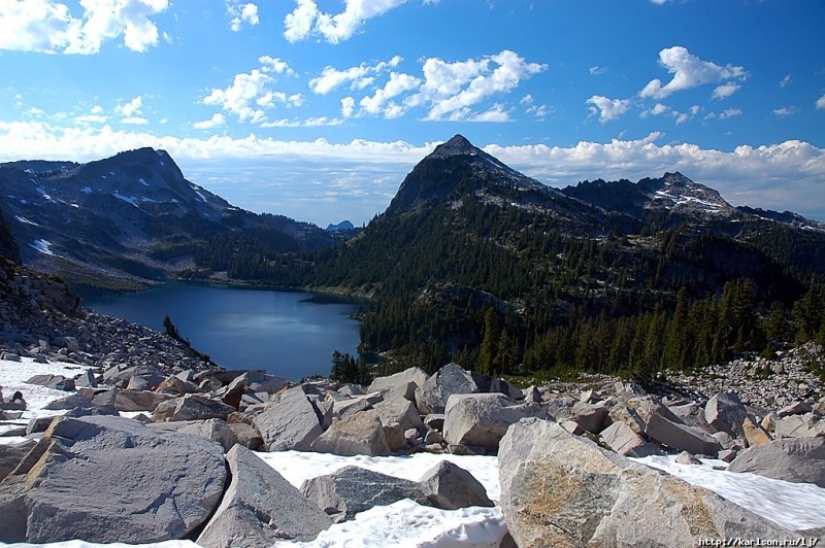
There was granite and huge snowfields all around us. On one of the snowfields, my friend slipped, flew a couple of dozen meters and went headlong into a crack. Fortunately, everything turned out to be only scratches, but for obvious reason after that he began to treat the glacial fields with a certain distrust. We had to go around all the fields on cobblestones, which made the journey even longer and harder. Through the cobblestones and snow we went down to the beautiful dark blue Lake Iron Cap. Even at the end of September, the water was full of icebergs. There was only granite and ice around without a single sign of greenery. And, nevertheless, two gray-haired marmots!
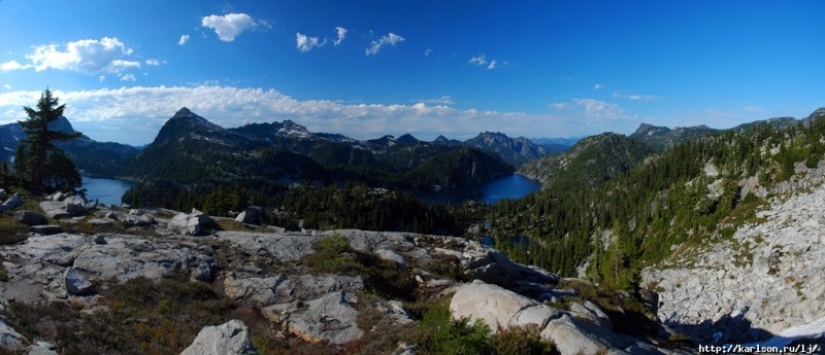

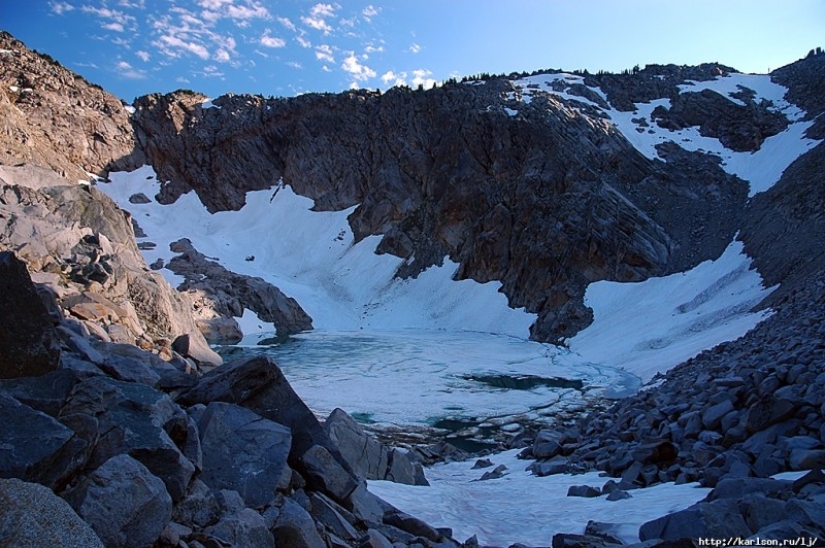
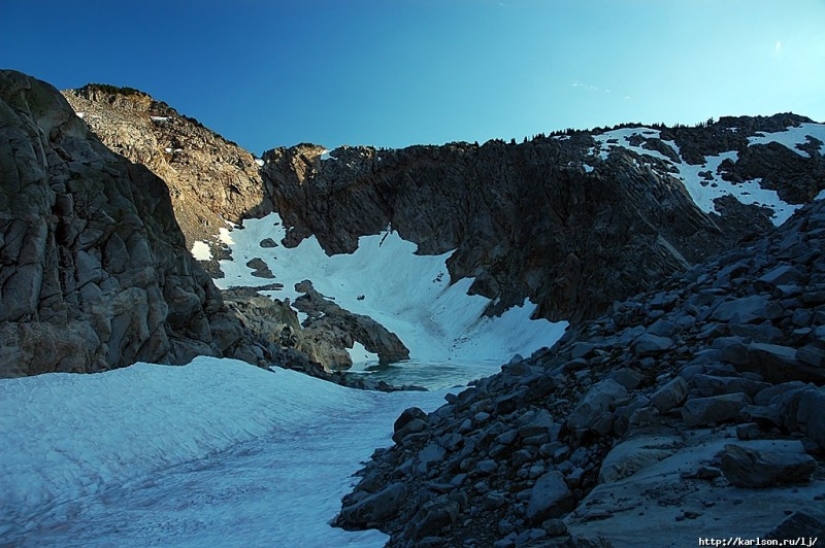
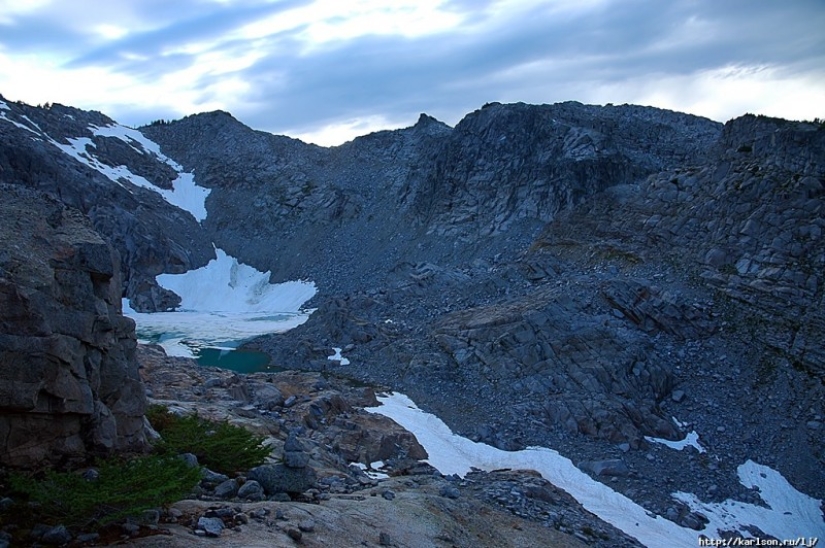

And mosquitoes. In principle, I try not to think bad about mosquitoes. Although mosquitoes drink human blood, at least they don't work in law. That's why I don't kill them. I feed them. I try not to use repellents. In mosquitoes, only females need blood and only once in a lifetime in order to leave offspring. Naturally, I cannot refuse a woman, especially a future mother! It seems to me that we humans should be proud that such a wild animal as a mosquito generally considers us as worthy helpers in such an important process as reproduction. Finally, nothing can actually be done. So I'm just trying to be patient. But these mosquitoes are so bad! According to my observations, American wild mosquitoes in nature reserves are much more stupid than Moscow bloodsuckers. In Moscow, mosquitoes know that they will be beaten and sit on all sorts of inconspicuous areas of the skin, for example, on the back and back of the hand. Here all the time, on lakes and on glaciers, my whole body was covered with mosquitoes from all sides. They tried to fly into the mouth and bite the tongue, sit on the eyes and get in the way in every frame. I was shocked by what absolutely environmentally unsustainable blood extraction practices they use! All that remained was to walk, jump on the rocks and climb on his hands. In the sunset rays we saw Otter Lake and total darkness caught us about a couple of miles (bird flight) from Tank Lakes, at the foot of another ridge.
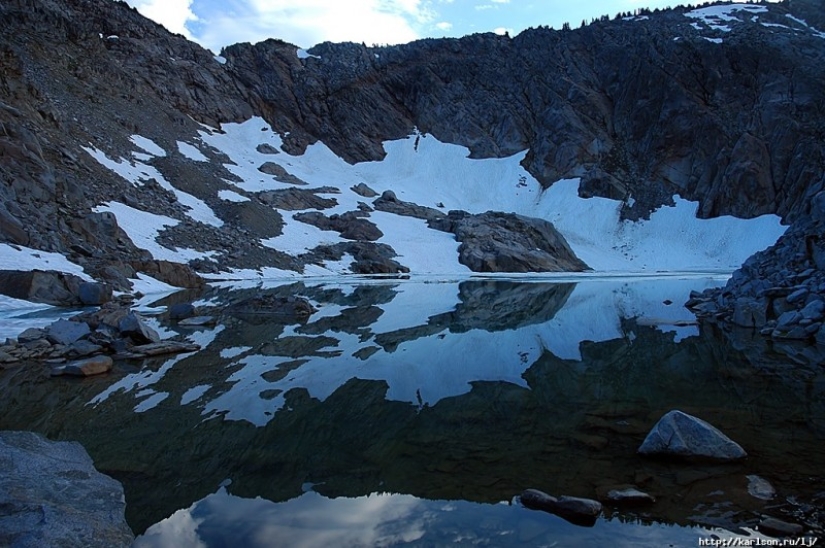
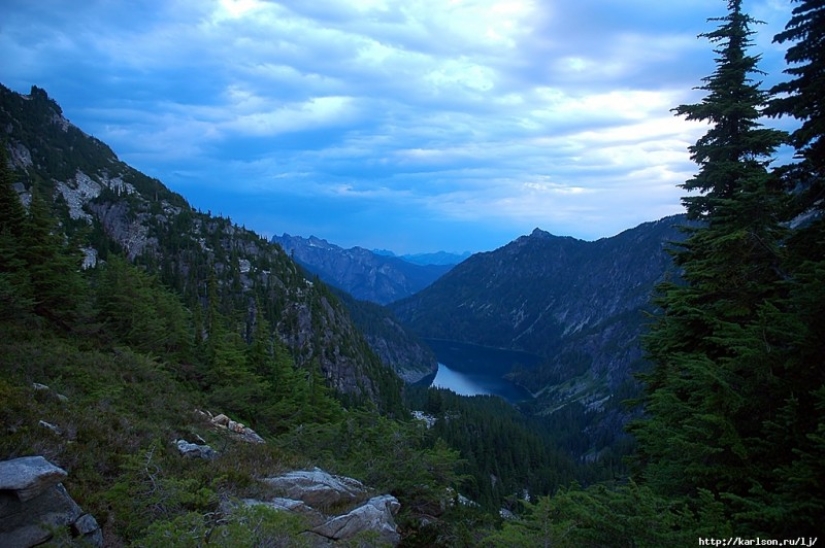
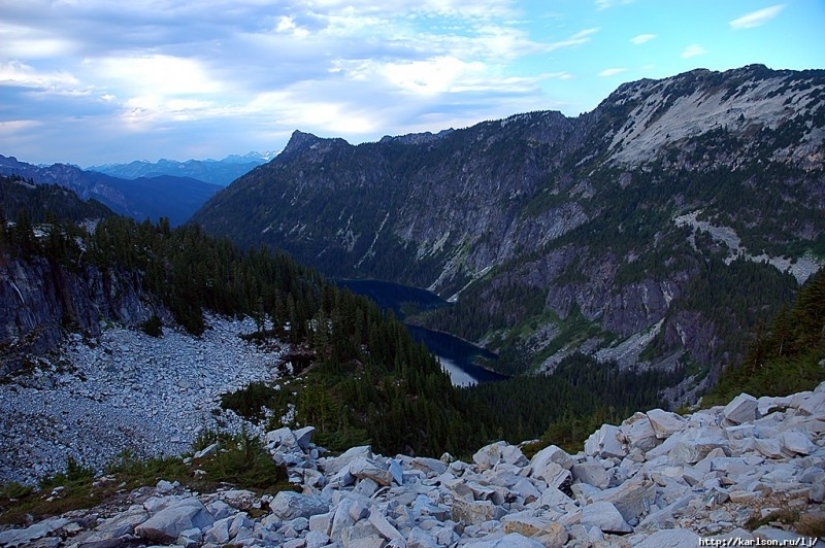
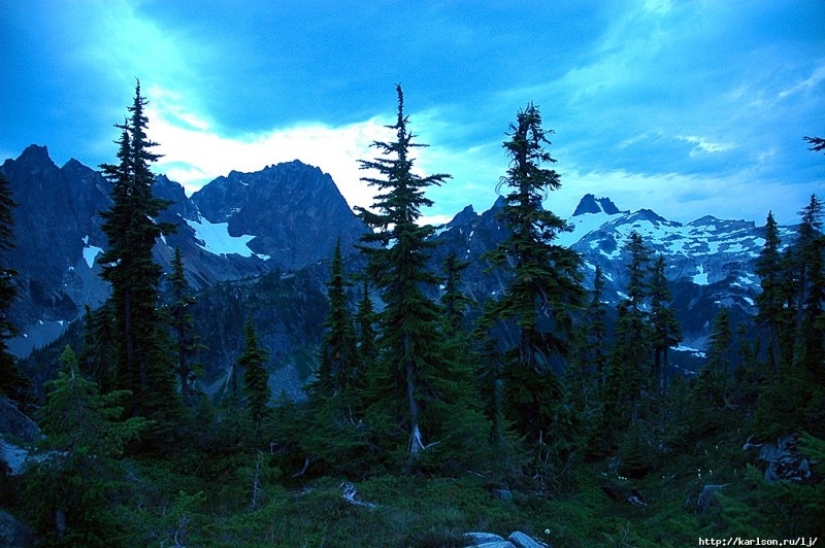
It's a bit difficult to climb rocks on your hands in the dark without knowing the route. That is, on the one hand, it's simple, you can't see where you're hanging, so it's not so scary. But on the other hand, it is difficult, because the light of the flashlight is not enough to see far ahead and at any moment you can get stuck at some wall that you cannot climb further. It took us three attempts (descent and ascent) before we were able to climb to a new height. To make it more fun, a storm came from the west, rain and snow poured, a strong wind rose, and the sky was painted with lightning.
We were pretty exhausted and decided to stop at another (unnamed lake) to pour water. And in the process, in the dark, we accidentally dropped my navigator into the water. Actually, navigators should be waterproof. Unfortunately, mine is no longer there. In one of the previous trips with me, he fell off a cliff and lost a small part of the hull. It has not stopped working, but now water can pour into it. And when the water gets inside, the electronics stop working.
And here we are in the middle of the wild nature of the devil-where at night without any possibility to understand where to go next. To be honest, at this time I really wanted to call 911, which would be a shame on the one hand, since I am a lifeguard myself, on the other hand it is impossible, since there is no cellular communication in the wild. And even if we managed to call for rescue, it would take rescuers more than one day to get to us. Staying put was not an option. There is only snow and rocks around, steam is coming out of the mouth from the cold, and there is no equipment for spending the night with you. Of course, there was another option to make a fire. But during a storm it is very difficult to find dead wood. And especially in the middle of a glacier.
So we went, just at random, in circles, until I was able to find Tank Lake in the dark, which I recognized even in the dark from a photo I saw on the Internet. That's how idle wandering on the Internet can save a life. The lake was already something familiar and greatly lifted my mood. There I was able to dry the navigator and get the signal again! Hurray! It remains only to find the stream leading to Opal Lake by the noise (all streams lead to some lake) and go down a few kilometers along it and finally find the trail again. And from there it's already only 15 kilometers to the car.
Beautiful lakes Opal, Emerald, Jadeite, Misty, and Alturas, alas, we saw only in pitch darkness. It was hard to walk, not from fatigue, but simply from lack of sleep, especially since the day before I had slept no more than four hours. At some moments my eyes refused to see the path. At one point, without any agreement, we sat down on the trail. Fifteen minutes later I woke up from the cold and saw two people sleeping like dead right on the trail. What a strange sight it would be if someone saw it! But these few minutes helped amazingly and with renewed strength we were able to overcome the last section of the way.
We left the forest at 7:20 in the morning, just as we entered the forest a day ago – with the first morning light, which this time made its way through a real downpour.
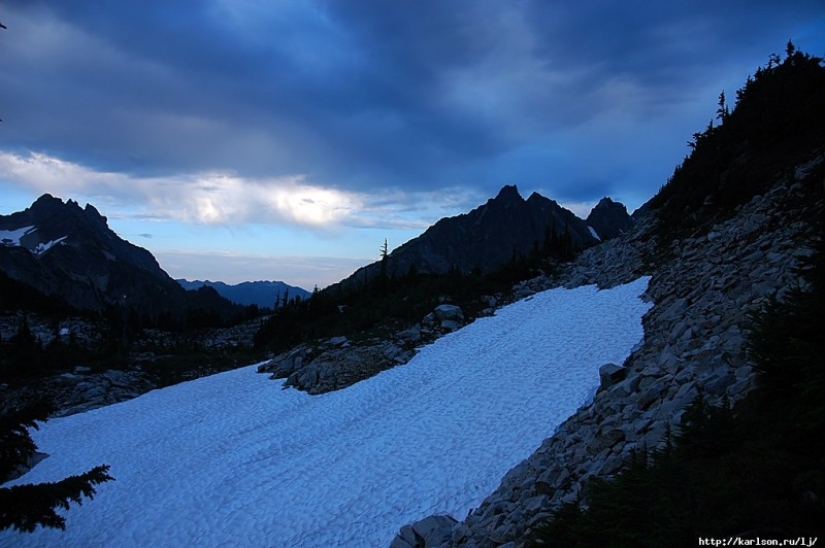
Unfortunately, it did not work out to complete the entire route in one day for a small technical reason – the path took exactly 24 hours and 50 minutes (47 kilometers and 5795 meters of total climb). I immediately offered to repeat it to see the remaining lakes, but I did not find understanding and we drove back to the city.
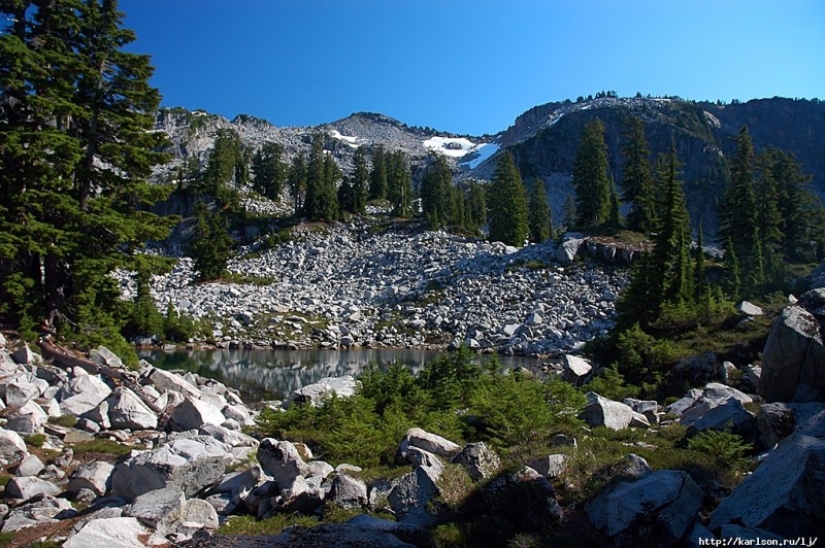

Recent articles

At first glance, these colorful works look like ordinary paintings - but upon closer inspection, it turns out that they are made... ...

I want to somehow distract myself from the news about the pandemic and plunge into the beautiful. Here, for example, is a story ...

Serbian surrealist artist Dragan Ilić creates astonishing and provocative paintings that blend symbolism with eroticism, and ...